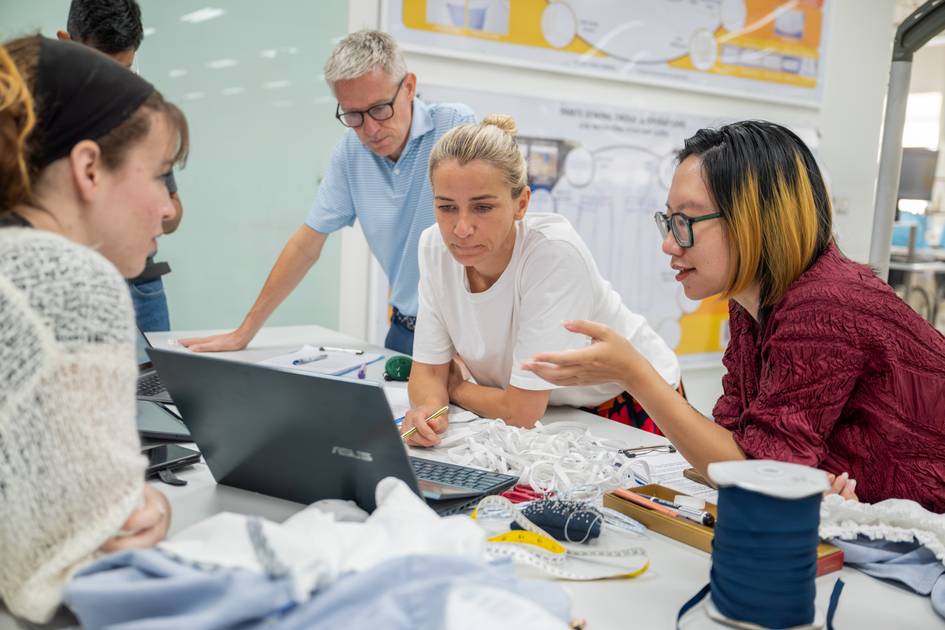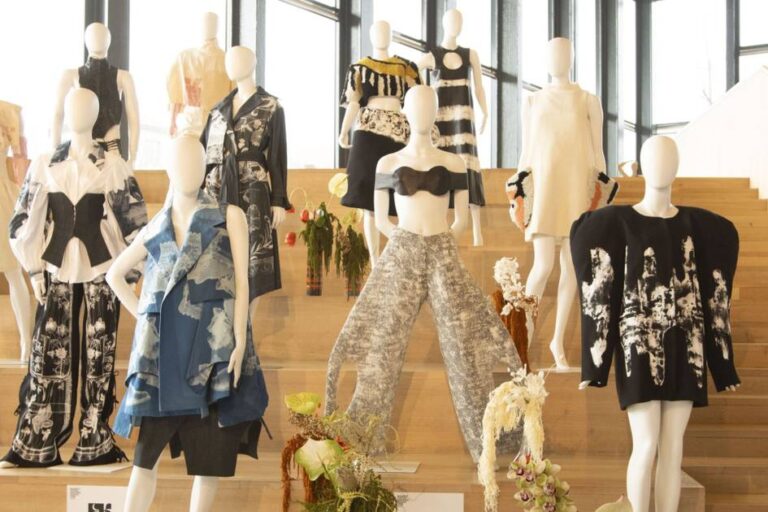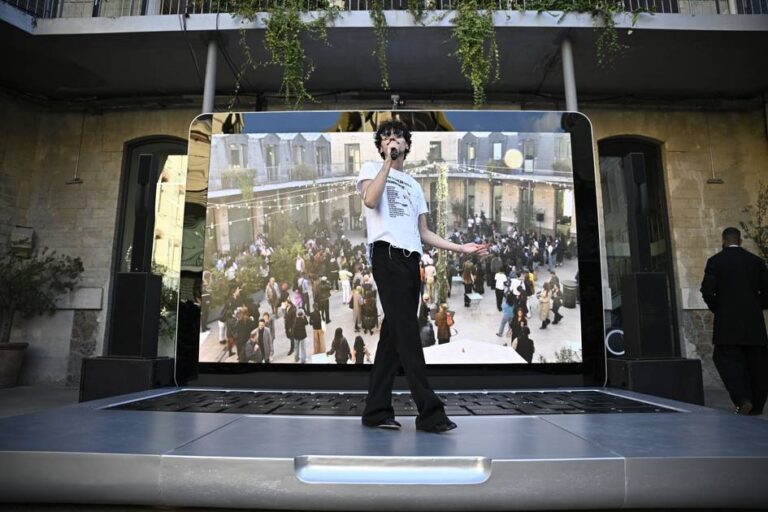How New Sustainable Fashion Brands Are Captivating Consumers

Navigating the fashion industry today presents challenges, particularly for emerging designers. In an environment marked by economic fluctuations, the rise of digital tools like AI, shifting retail practices, and evolving consumer habits, there’s a common thread: an increasing emphasis on sustainable, circular practices. However, just claiming sustainability isn’t enough for success. Brands must dig deeper than surface-level messaging to truly engage consumers and turn that interest into sales.
To explore this dynamic, we spoke with three notable alumni from the Redress Award Design (RDA)—Isabel Annaiss Yucra Mancilla from Activism, Eric Wong from Absurd Laboratory, and Pat Guzik. They shared insights on leveraging brand values and practices to build viable businesses in a challenging market focused on sustainability.
The “Say-Do” Gap: Bridging Theory and Reality
Recent research shows a significant “say-do” gap among consumers worldwide regarding sustainable shopping. While 75% of shoppers view themselves as conscious consumers, they only act on these values 33% of the time, revealing a noticeable disconnect between intention and action. This gap manifests for sustainable fashion designers as enthusiasm from customers who appreciate the story but hesitate when it’s time to pay.
Pat Guzik, whose women’s wear brand emphasizes transparent production in Poland, recalls, “When I participated in the Redress Design Award in 2016, few in my country understood ‘sustainable fashion.’ Now, awareness has surged, but so has skepticism.” She points out that rampant greenwashing has eroded consumer trust in the term “sustainable.”
For Eric Wong of Absurd Laboratory in Hong Kong, awareness in sustainable fashion has shifted significantly since 2011, when participation was primarily among niche activists. Today, over 60% of his customers are Gen Z, demanding transparency and action—unfortunately, this heightened awareness doesn’t always result in purchases.
The real challenge, as Mancilla from the Peruvian brand Artivisit explains, is to present sustainability as an appealing choice rather than a burden. By sharing narratives that highlight how a product preserves traditions and supports artisans, the connection becomes emotional. Each item tells a story that resonates more deeply than the environmental impact alone, making sustainability not just a responsibility but a desirable option.
Shifting from “We” to “Me”: Personalizing the Message
Guzik found that her most powerful strategy was simply committing to transparency. “Educating consumers about the production process and the people behind the garments fosters a unique bond. Knowing that their bag was crafted by retired Mrs. Lucyna makes a difference,” she reflects. This personal connection transcends the abstract idea of workers in factories and fosters authenticity.
Mancilla refers to her designs as “cultural artifacts,” emphasizing that they embody hours of artisan work and stories that other products cannot replicate. “Each piece carries a narrative that continues the tale when worn,” she says, connecting buyers to the pieces on an emotional and cultural level.
Storytelling is crucial in bridging the gap between interest and purchase. Guzik describes her collections as “a labyrinth of symbols,” weaving narratives from concept to creation. Similarly, Wong uses “heritage tags” to provide insights into the origins and creation process of each design, sharing impactful environmental details along the way. Engaging content on social media, such as virtual studio tours, makes sustainability relatable and tangible for consumers.
Transparent Education Without Overwhelm
The emphasis on transparency is crucial, but it should not overwhelm potential buyers. By making educational content accessible and clear, these designers rise above greenwashing, fostering meaningful relationships with consumers. Wong integrates education through workshops, teaching customers to upcycle their clothes and directly engaging them in sustainable practices.
Guzik enhances consumer understanding with detailed labels and comprehensive information on her website, answering the fundamental question: “Where do my clothes come from?” Mancilla demonstrates her processes, from artisan craftsmanship to innovative materials, illustrating the nuances of sustainability through lived experiences and cultural narratives.
Building Community Connections
With limited marketing budgets, Wong, Guzik, and Mancilla rely on community strength and peer influence to bolster their brands. Wong utilizes user-generated content campaigns that allow customers to showcase styled pieces on social media, generating excitement without hefty ad costs. “We create hands-on sustainability connections through workshops,” he notes.
For Guzik, community embodies both a strategy and a source of support. “Building an engaged community enhances loyalty and encourages conscious purchasing.” The RDA alumni network serves as a vital resource, allowing designers to share experiences, challenges, and solutions. Mancilla highlights that being part of this global movement reinforces the notion of collective purpose in redefining fashion.
Addressing the Price Point Dilemma
One of the significant barriers faced by these designers is pricing, as Wong’s remade pieces cost significantly more than fast-fashion alternatives. Guzik’s commitment to local producers negates seasonal discounts, and Mancilla’s use of time-intensive artisan labor elevates costs. So how do they justify these prices?
Mancilla emphasizes that her garments are cultural artifacts, highlighting their lasting quality and ethical production. Wong translates the investment into value: “One remade jacket replaces five fast fashion items, reducing costs over time.” His pieces often hold value in secondhand markets, adding further justification for their price. Guzik underscores the longevity of her designs, stating her philosophy that garments should not vary in value with seasons.
To navigate pricing barriers, these designers also offer entry-level products and limited-time offers to attract hesitant buyers. Wong might provide accessories at lower price points, while Guzik encourages the shared use of her one-size-fits-all designs, promoting sustainability and accessibility simultaneously.
Embracing the Sustainable Niche
Each of these designers accepts their role in a sustainable niche rather than competing directly with fast fashion. Guzik states, “We’re not trying to compete with Zara; we’re creating an alternative.” By focusing on deeper connections rather than mass production, they can cultivate loyal customer relationships. Mancilla points out that as consumers increasingly question pricing, brands that blend luxury with genuine sustainability stand to benefit.
Despite their innovative approaches, structural challenges persist. Guzik, for example, faces issues related to cash flow and self-financing, while Wong struggles with sourcing high-quality materials consistently. Mancilla has to manage the delicate balance between authentic craftsmanship and scaling her brand.
Yet, these designers remain focused on their sustainable missions. Being part of the RDA alumni network reinforces their commitment, reminding them that their paths, though challenging, lead to meaningful change. They embody the idea that success in the sustainability arena relies on authentic communication and shared values. As they demonstrate, bridging the “say-do” gap requires creativity, patience, and dedication to truly connect with consumers.





